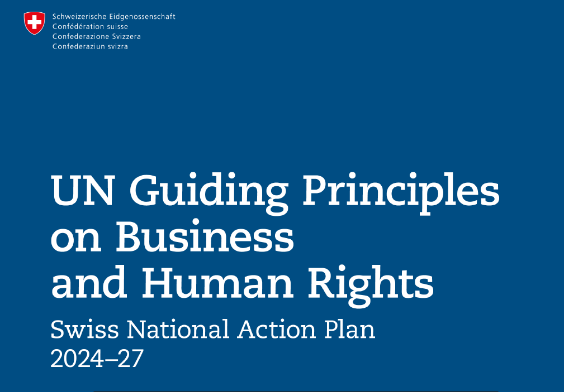Written Submission to the U.S. Senate Committee on Foreign Relations: Hearing on Prospects for Democratic Reconciliation and Workers’ Rights in Bangladesh

February 11, 2014
More than 1,800 people have died in Bangladeshi factories in the last 24 months, victims of tragic factory fires and a building collapse that ranks as one of the largest industrial accidents in modern history. In the context of an acute lack of government oversight, poor infrastructure, and loose sourcing relationships, the risk of further deadly industrial accidents remains high unless serious reform is undertaken to address these chronic problems. We commend the Committee on Foreign Relations for convening this timely and important hearing to examine the role of the U.S. Government and American and European brands in enhancing workplace safety and workers’ rights in the supply chain.
American consumers and companies have played an important role in the growth of the garment industry in Bangladesh. Employers in the garment sector that supply American brands and retailers have created millions of jobs that provide a path out of extreme poverty for many young Bangladeshis, especially rural women Apparel now represents 80% of the country’s export economy.
But the work environment in the garment industry in Bangladesh is dire. Industrial accidents happen at an alarming rate, demonstrating a deep breakdown in the way the supply chain operates. Fundamental reform is needed in three key areas: the sourcing strategies of global brands and retailers, oversight of the garment sector by the government of Bangladesh, and investments in development to address infrastructure failings that contribute to the cycle of factory disasters.
The Committee’s hearing examines efforts to address shortcomings in workplace safety and respect for workers’ rights in Bangladesh by the U.S. Government and two separate private initiatives on the part of multinational brands, as well as local unions. Over the last year, the Center for Business and Human Rights at New York University Stern School of Business has studied these efforts, including through two research missions to Bangladesh and a meeting convened at NYU Stern that brought together major players in the garment sector. Our conclusion is that reforms proposed to improve working conditions in the last year are not sufficient to bring about fundamental change in the supply chain. There is an urgent need to identify and address underlying causes of industrial accidents and to chart a practical and achievable way forward for the garment sector in Bangladesh.
Context
The premise of globalization and global supply chains is that they benefit people in developed and developing countries. Consumers in the United States and other developed countries have wide access to affordable products, while workers in places like Bangladesh are lifted out of extreme poverty and their countries become more prosperous and stable partners. The tragedies that have unfolded in Bangladesh in the last year are a stark illustration that deep reform is needed to make this equation add up.
Bangladesh is by no means the only country that has capitalized on a large labor force and low production costs to build an export economy centered on apparel exports. China, Vietnam, Indonesia, Honduras, Cambodia, Mexico, and India all have followed similar strategies. But Bangladesh is unusual in its production volumes (it follows only China and Vietnam in U.S. apparel imports) and the outsized role garments play in its export economy, coupled with the country’s exceptionally weak governance.
Bangladesh ranks at or near the bottom among the 97 countries measured in the World Justice Project’s annual Rule of Law Index, across all measures of good governance. It ranks 97th in civil justice, 90th in regulatory enforcement, and 89th in absence of corruption. In these areas, it joins Liberia, Cameroon, Cambodia, Sierra Leone, Venezuela, Zimbabwe, Ethiopia, and Pakistan. In short, the government lacks the political will, technical capacity, and resources necessary to protect the basic rights of its own workers.
Initial steps toward deeper reform
Some important steps have been taken in the last year which begin to lay the groundwork for deeper reform. In June 2013, the Obama administration suspended Bangladesh’s participation in the Generalized System of Preferences (GSP) program, which gives preferential trade status to least developed countries. While the GSP program does not include apparel exports from Bangladesh, it sent an important signal that the United States considers a lack of respect for worker safety and workers’ rights to be a serious diplomatic issue. As Senator Levin and Congressman Miller said at the time, “this decision sends a strong message that Bangladesh must take serious and concrete action to improve the situation on the ground.”
The government of Bangladesh complained bitterly about the decision, despite the fact that it affects only 1% of Bangladesh’s exports to the United States. In their statement, Senator Levin and Congressman Miller also expressed an expectation that the “decision will be viewed with interest by others considering similar action, such as the European Union.” The European Union’s GSP program includes garments for Bangladesh; suspension would represent a serious economic blow, though it has not indicated whether it will consider such a move.
Second, two important private initiatives have been formed around the issue of fire and building safety, each bringing together separate groups of global apparel brands and retailers, the Accord on Fire and Building Safety (“Accord”) and the Alliance for Bangladesh Worker Safety (“Alliance”). Both aim to improve factory safety through three-part programs that include factory inspections, worker trainings, and the provision of resources to make factory improvements over a five-year period.
Considerable attention and energy has been devoted to parsing differences between these two initiatives, including in the context of this Committee’s hearing. One important difference is the participation of global and local unions in the Accord. The Accord also imposes stricter requirements for global retailers in providing mandatory funding for remediation, whereas the Alliance makes contributions for remediation voluntary. But our analysis of the Accord and the Alliance (Appendix 1) concludes that the similarities outweigh the differences. Both bring together large groups of companies operating in the same sector to conduct specific activities centered on fire and building safety in a coordinated and accountable manner. It is a very positive development that more than 150 American and European companies are working together on these issues and embracing common standards for implementation, but more needs to be done.
On a parallel track, the government of Bangladesh has initiated its own “National Tripartite Plan of Action on Fire Safety in the RMG Sector.” The plan identifies many of the issues that are relevant for transforming the garment sector, including setting up a transparent and accountable system for subcontracting. But the plan includes an overly ambitious timeline, and deadlines have passed for the majority of the 21 actions steps. Especially in Bangladesh’s turbulent political and electoral climate, it seems unlikely that there will be either sufficient political will or government resources to implement the plan’s complex administrative and programmatic activities.
Business as usual is not an option
“Business as usual is not an option” was a common refrain in the immediate aftermath of Rana Plaza. But since last April, little has changed in the way business operates. Professor Richard Locke, now of Brown University, has conducted extensive research on systems to improve working conditions in the manufacturing sector. His recent book, The Promise and Limits of Private Power: Promoting Labor Standards in a Global Economy (Cambridge 2013), concludes that the two most important factors for improving working conditions are long-term, trust-based business relationships between buyers and suppliers, and a strong rule of law.
Locke also concludes that systems based on labor inspections by multinational brands that are conducted independently of any sourcing incentives or disincentives are largely ineffective in achieving better working conditions. Many apparel brands initiated this kind of private compliance model in the late 1990s, and Locke’s conclusion resonates among people who struggled to make improvements under this model.
Since they both launched last year, it appears that the Accord and the Alliance are doubling down on the private compliance model and are investing heavily in the same regime of inspections and remediation plans that have constituted conventional wisdom in the apparel sector for the last 15 years. Both initiatives are in the early stages of development and there is room for both to innovate and expand their scope. For now, while the Accord and the Alliance should be commended for bringing together more than 150 global companies to collectively address factory safety and for increasing accountability to outside stakeholders, neither agreement goes far enough.
The collapse of Rana Plaza last April was the most deadly industrial accident ever to occur in the global apparel industry. Yet it is not at all clear that the deaths of more than 1,200 workers in a single accident have changed the underlying structure of the supply chain model that helped create the circumstances leading to the tragedy.
Real reform requires further action
Reforming the supply chain will require significant investments in three key areas: supply chain management, government oversight, and infrastructure development. Investing in these areas does not mean that business – either globally or in Bangladesh – should not be profitable. We believe strongly in the power of business to create value for business and society, as it has done in Bangladesh and around the world. But the current model is not sustainable. A supply chain that is literally falling down is bad for workers, business, American consumers, and Bangladesh’s prospects for growth in its export economy.
1. Supply chain management
As Locke’s research has shown, the best thing global companies can do for working conditions is to develop long-term, trust-based business relationships directly with suppliers. For most companies, especially those that are heavily reliant on intermediaries and sourcing agents to procure their products, this means fundamentally reexamining their sourcing strategies. Some companies, including Nike, Adidas, H&M, and Fast Retailing (Uniqlo) have started to make strides in this area by shortening their supply chains, establishing relationships with strategic suppliers, and maintaining direct relationships with a significant portion of their supplier networks.
It is concerning to see repeated reports of American and European companies expressing surprise that their products were found to have been made in an “unauthorized” facility, often with acutely substandard conditions and even child labor. It is not credible for major brands to claim ignorance of where their products are being made. The answer to this problem is not yet another supplier code of conduct or inspections on top of inspections, but investments in better supply chain management.
There is something wrong with the way the supply chain is managed if the only way to meet demands for price, quantity, and delivery time is to split up orders among an opaque network of suppliers, some of whom operate substandard facilities. This is what many in the garment sector describe as an open secret – the dependence on a system of authorized and unauthorized subcontracting in which workers ultimately pay the price.
Companies are quick to point out that they have policies against unauthorized subcontracting, and many supplier relationships have been cut in recent months over allegations of improper subcontracting. Addressing this problem will require more than a finger-in-the-dike approach. What is needed is better data about the nature of subcontracting and an open conversation about how to meet the pressures suppliers face in a more sustainable way, for workers and for business.
The Center for Business and Human Rights at NYU Stern is urging a more open conversation about the nature of business relationships in the supply chain and their effect on working conditions and respect for workers’ rights. This spring, we will publish a detailed report on situation in Bangladesh and will convene a second meeting in Dhaka that will bring together buyers, suppliers, worker organizations, governments, and international organizations.
Reexamining sourcing strategies will not be easy. Doing so is likely to have far reaching implications well beyond Bangladesh, and it may increase costs for brands and consumers. But failing to look at the connection between business practices and working conditions will only perpetuate the tragedies of Rana Plaza, Tazreen, and countless other factories.
2. Government oversight
Primary responsibility for protecting the rights of Bangladeshi workers rests firmly with the Government of Bangladesh. Since its inception in the 1980s, an almost total lack of oversight has characterized the readymade garment sector in Bangladesh. In the heyday of the Multifibre Arrangement (MFA), Korean factory owners facing limits on export quotas turned to Bangladesh as a place ripe for development in apparel exports. With few regulations and no building code in place until 1993, apparel factories were allowed to spring up almost anywhere in and around Dhaka – in back yards, above auto body shops, in shopping centers, and tenement buildings.
The legacy of this system is well known. With increasing demand for high production volumes, floors have been added illegally to existing buildings to accommodate yet more factory space. Historically, the few factory inspectors employed by the government were paid so little that corruption was inevitable. And the government has devolved important regulatory functions, including issuance of an import and export permit and maintenance of the database of factories, to the leading trade association of garment manufacturers, the Bangladesh Garment Manufacturers and Exporters Association (BGMEA).
It is critically important that the government assume much more significant oversight duties in the garment sector and devote the resources and personnel to make its oversight effective. Unfortunately, the government remains incredibly weak, especially in the midst of electoral turbulence and ongoing political protests.
The international community rallied around the launch of Better Work Bangladesh last fall, with donor governments in the Netherlands, Norway, Switzerland, the United States, and the UK providing significant funding to underwrite the program. Better Work program, now operating in eight countries, was initially developed in Cambodia with the aim of preventing exporting countries from exploiting low labor standards to attain competitive advantage in the global marketplace. The program also is intended to shift the burden of labor inspections in exporting countries from private actors – brands, retailers, and third-party auditors – to the public sector.
But Better Work’s own assessment of its progress to date indicates that it has struggled to sustainably devolve enforcement of labor standards to the government or to enhance respect for ILO core labor standards in the most challenging areas. The Thirtieth Synthesis Report issued by the flagship Better Factories Cambodia program noted that child labor, discrimination, and freedom of association violations persisted, even after 12 years of auditing under the program.
Despite these challenges, Better Work Bangladesh is certainly worth investment by the international community. But it should not be a substitute for government oversight. Foreign governments should keep up diplomatic pressure on the government of Bangladesh, as the United States has done around GSP suspension, to continue to press for greater attention and investment in oversight functions.
The BGMEA, too, should work with the government to gradually stop serving in its current pseudo-regulatory role. The BGMEA is a powerful political and economic entity. This is a moment for it to lead to ensure the sustainability of what has been Bangladesh’s most profitable export industry. This means leading its membership to accept changes that will likely impose additional responsibilities on its members – increased regulations, greater public oversight, and strategies to relocate and even close some factories. These are the areas that are most critical for long-term sustainability of the garment sector, and they cannot be negotiated by outsiders.
The failure of the government to regulate the labor market is also evident in the lack of adequate judicial remedy for victims of industrial accidents. Documentation by the Bangladesh Legal Aid and Services Trust (BLAST) and the Bangladesh Institute for Labor Studies illustrates a pattern of inadequate remedy and compensation for victims, which adds to the burden of families who have already suffered greatly and further erodes trust in the garment sector.
3. Infrastructure development
A third critical area for lasting change in workplace safety is infrastructure development. Bangladesh lacks important infrastructure in industrial production facilities and electricity, among other areas. A lack of purpose-built production facilities and insufficient electrical production and delivery are major contributing factors to fire and building safety risks.
Bangladesh’s infrastructure is one of the most underdeveloped in the world. The 2013-2014 Global Competitiveness Report of the World Economic Forum (WEF) ranks Bangladesh’s infrastructure was 132nd out of 148 countries under review. The World Bank, IFC, and foreign government donors have made attempts over the years to invest in infrastructure. Their efforts have been stymied by endemic corruption and an entrenched unwillingness on the part of the government to investigate and prosecute corruption.
Here, too, the BGMEA has a leadership role to play in helping to develop new industrial parks where garment factories can relocate. It is notable that the export processing zones, which were purpose built for large-scale industrial production, have not been plagued by fires and building collapses. There are other concerns regarding the zones, most importantly around a lack of respect for freedom of association, but on the issues of fire and building safety, they provide a lesson for the broader garment sector. The government, the BGMEA, and foreign donors should redouble efforts to speed the creation of more industrial parks.
A second major issue is the quality of the electrical supply. Again, Bangladesh ranks near the bottom among the 148 countries included in the WEF survey, at 133rd. The country currently is unable to meet the rising demand for electricity from increasing industrialization. From 2000 to 2012, electricity consumption increased by an annual average of 12 percent, with little increase in electricity production.
Power shortages and power black outs occur frequently in the garment sector, causing factory owners to turn to generators. As was well documented in the Rana Plaza collapse, the combination of heavy generators resting on unstable foundations can have tragic results. Moreover, generators consume more than 300 million liters of diesel and furnace oil a year, which adds significantly to production costs. And when power outages cause manufacturing delays, factory owners assume the high cost of airfreight. Some of the larger and better-resourced factory complexes have even built their own private power plants, which help those few factories that can afford them, but do little to address sector-wide shortcomings.
At present, most foreign development funding is focused on investments in Better Work Bangladesh, worker empowerment and skill development programs, food security, labor inspections, and combatting human trafficking. But in the absence of major infrastructure overhaul in a few key areas, development programming in the garment sector will have an insufficient effect. Workers empowered to work in crumbling buildings still face grave risks. Investing in the kind of major infrastructure development Bangladesh needs has proven to be a frustrating and often fruitless task because of corruption. It is up to the government and local industry to make the case that Bangladesh is a sound investment.
Conclusion
The Center for Business and Human Rights at NYU Stern is hardly the first to assert that the way to increase respect for workers’ rights in Bangladesh is better government oversight and investments in infrastructure development. Many people also acknowledge privately that loose business relationships, a lack of incentives for better labor practices, and the priority placed on negotiating the absolute lowest cost of production are what really drive poor working conditions.
But it is also common to hear that these issues are too difficult to take on or that “we have to start somewhere,” with the same kind of inspection and remediation programs that have constituted CSR in the apparel industry since the mid-1990s. The priorities outlined above are ambitious because this is a moment for bold action. Media coverage of workplace safety in the global supply chain has not been this high in recent memory. Consumers are hungry for information and assurance that the products they buy meet basic standards of workers’ rights. The Administration is using its leverage through trade policy to encourage reform on labor rights. And Congress is paying attention, as demonstrated by this important hearing.
Enhancing the dignity of work and the sustainability of the garment sector in Bangladesh will require more than foreign solutions. The government of Bangladesh and local industry must lead a transition to a better managed and better regulated garment sector that remains competitive over the long term. The first 20 years of the garment industry have helped lift millions out of extreme poverty in Bangladesh. We believe strongly that business also can be a force to ensure that the next two decades are brighter for Bangladesh’s workers. We stand ready to work with local and global businesses, policymakers, workers’ organizations, and other experts to chart a sustainable future course.
 Global Labor
Global Labor


